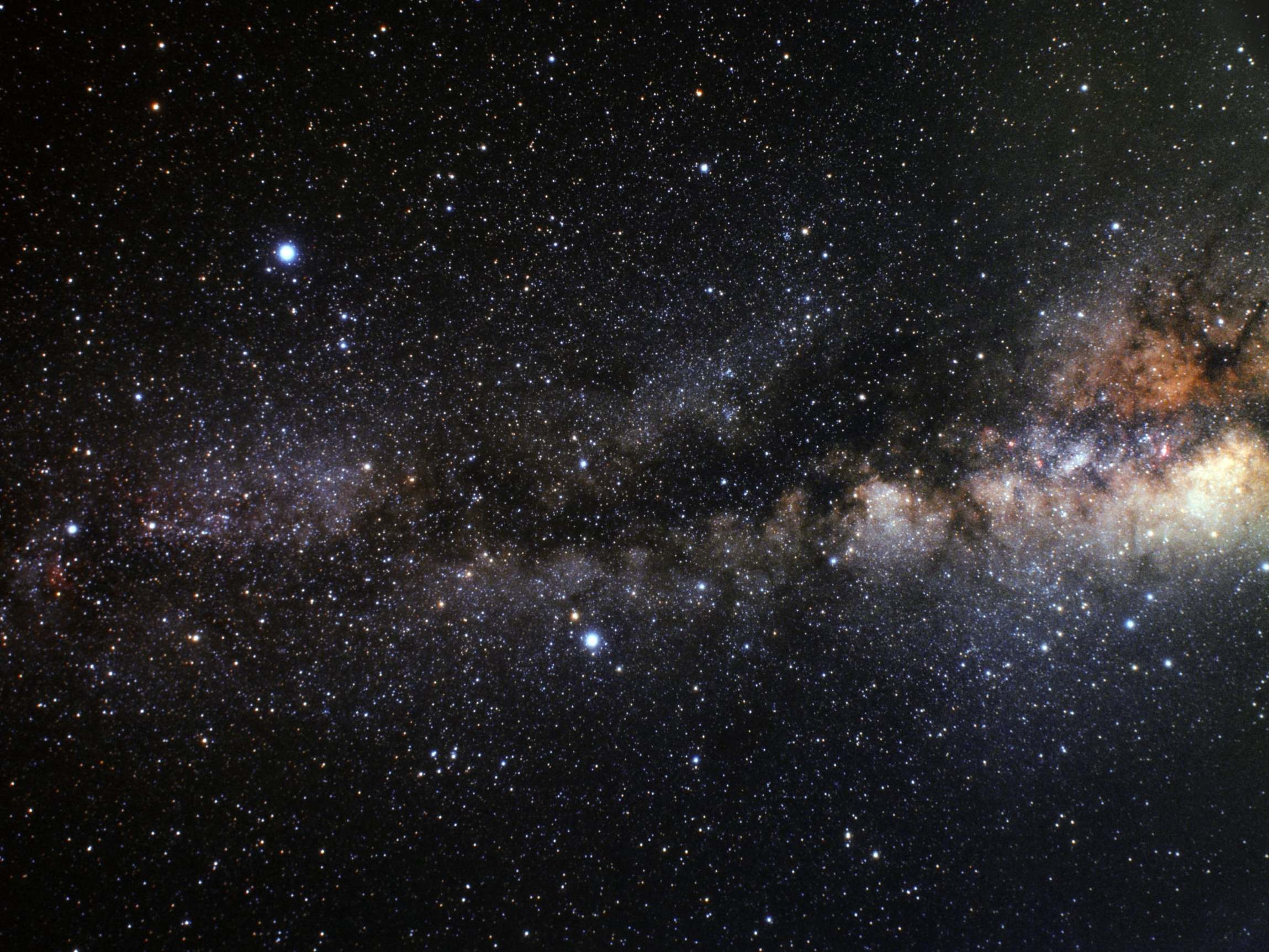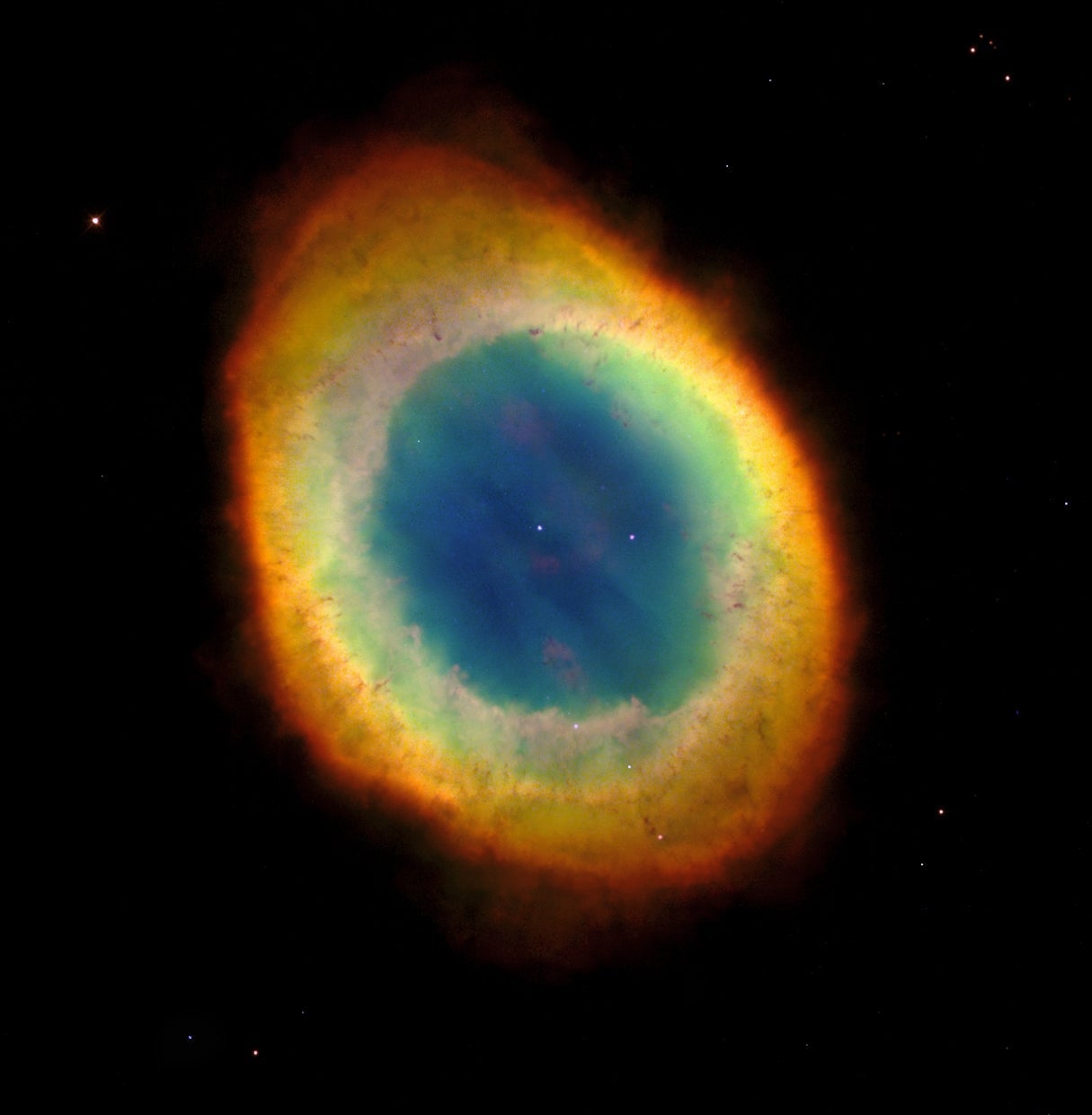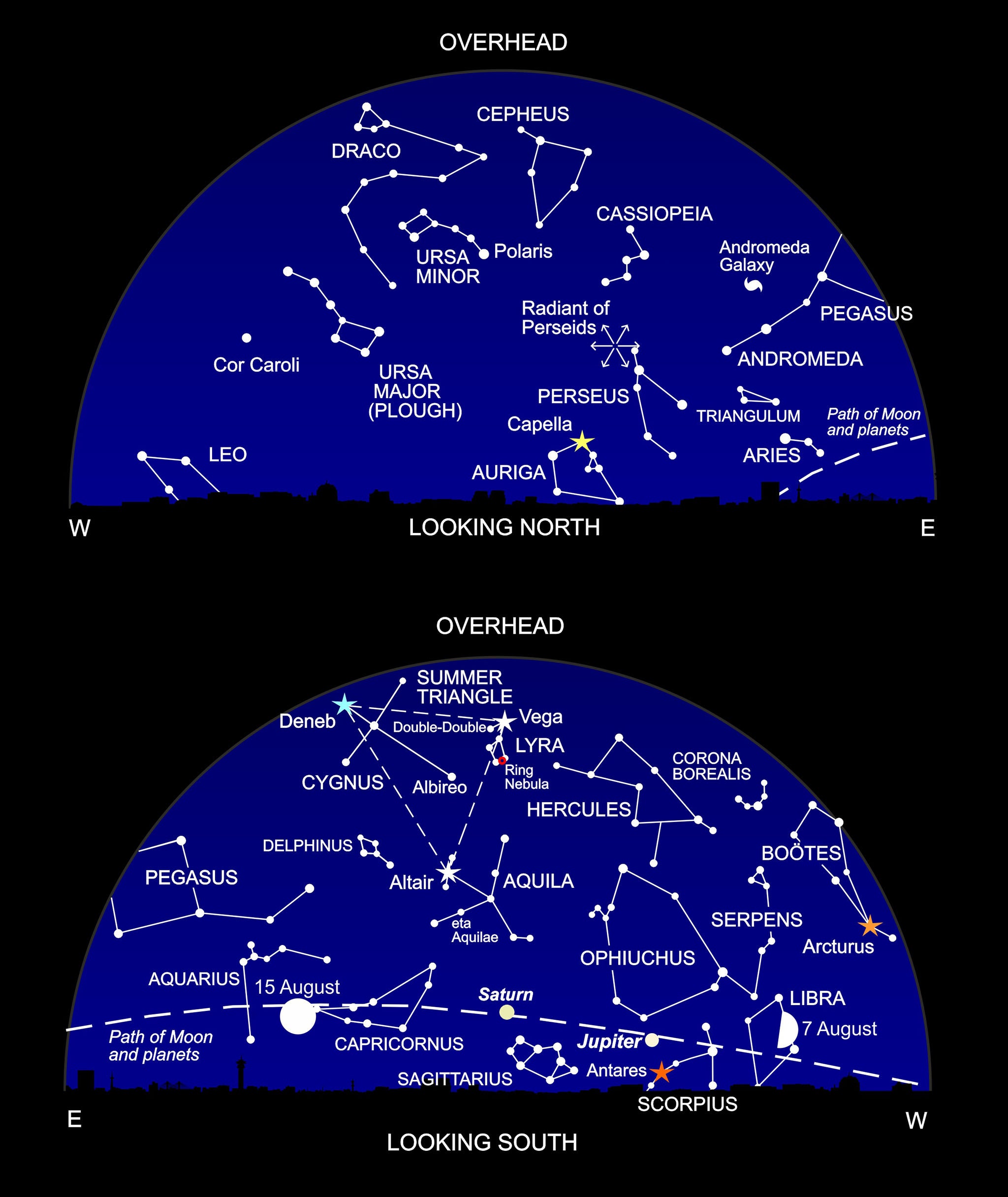Stargazing in August: what to look out for in the skies this month
It’s a busy four weeks in the cosmos, so have your binoculars at the ready

The summer skies can never rival the firmament of winter, spangled with its profusion of brilliant, glittering stars. But there are wonders to be found if you but seek them out.
It’s high summer now, and if you look overhead, you’ll see the sky is dominated by a triangle of three bright stars. The “Summer Triangle” isn’t a constellation in its own right, but a giant shape formed by the brightest stars from: Aquila, Cygnus and Lyra.
The stars appear roughly the same brightness, but it’s amazing what cosmic tricks distance can play. Altair in Aquila is the closest, at a mere 17 light years, where a light year – the distance a ray of light travels in one year – is almost 10 trillion kilometres. This young white star spins ferociously, with a “day” of nine hours (as compared to over 25 days for the sun). This frenzied rotation rate means that Altair is close to breaking up.
Pure-white Vega is in Lyra. It’s the fifth-brightest star in the sky, and is 25 light years away. Because the Earth’s axis gradually “wobbles” (an effect called precession), Vega will become our pole star around AD14000. It’s surrounded by a disc of dust that may be forming into planets.
Deneb, in Cygnus, is the rule-breaking member of the trio. Although it looks roughly as bright as Altair and Vega, that’s an illusion. This celestial beacon is estimated to lie between 1,500 and 2,000 light years away from the sun. This means that Deneb is some 50,000-200,000 times more luminous than our local star.
The constellations these stars head up are no less fascinating. True, Aquila is a bit insipid to look at, but it does resemble a flying eagle. It boasts a star – Eta Aquilae – that pulsates and varies regularly in brightness, and is one of the brightest of the Cepheid variable stars that are used for measuring distances to other galaxies.
Cygnus is a glorious flying swan, neck and wings outstretched, flying along the Milky Way. Sweep the constellation with binoculars or a small telescope: you’ll discover glowing patches of fuzzy brightness. These are just a few of the star clusters and nebulae embedded in the Milky Way.
Make your way down to the “head” of the swan (opposite direction from Cygnus). There you’ll see a great dark cloud – the Cygnus Rift – silhouetted against the Milky Way. This is an agglomeration of dark cosmic dust (interstellar soot) that will be a birthplace for future stars.
While you’re at the head, take in Albireo. If you have a small telescope, you’ll see it’s double star of gold and sapphire. We rate Albireo as the most beautiful double star in the sky
Lyra is the smallest of the three constellations. Perfectly-formed, it looks like a tiny lyre – but it’s packed with goodies. To the left of Vega, you’ll spot a star; and – if you’re keen-sighted – you’ll notice that it’s double. Now take a small telescope to it... Yes, each of the components is double. This is Epsilon Lyrae: but everyone calls it the “Double Double”.
Now for Lyra’s hidden gem; but you’ll need a medium-sized telescope for this. Between the bottom two stars of the constellation lies a beautiful – but ghostly – star corpse, a planetary nebula (a name coined by William Herschel, as these objects resemble Uranus, a planet he’d discovered).
The Ring Nebula looks like a cosmic smoke-ring. It’s the remains of an unstable red giant which puffed its atmosphere into space when it ran out of nuclear fuel. At the centre of the ring is the collapsed core of the old star: its fate will be to dwindle into a cold, black cinder.

It’s a reminder of the destiny of our sun – but at least we have 7 billion years to go.
What’s up
As it grows dark, you can’t miss brilliant Jupiter, low in the southwest. The giant planet shines brighter than any of the stars, and a small telescope – or even binoculars held steadily – will reveal its four biggest moons.
The reddish star to Jupiter’s lower right is Antares, the heart of Scorpius, the celestial scorpion. And the “star” rather further to the left of Jupiter is the planet Saturn. Through a telescope you can spot the famous rings girdling this cream-coloured world.
If you’d like a harder planetary challenge, set your alarm for the early hours any morning around the middle of the month. Scan with your eyes – or binoculars – along the eastern horizon between 5 and 6am, for a glimpse of tiny Mercury, the planet that most closely hugs the sun as it speeds round in a “year” that lasts only 88 of our days.

We have two special events in store this month. On the night of 12-13 August, the Earth runs into a stream of debris from Comet Swift-Tuttle. Tiny dust grains hurtle into the atmosphere, and burn up in a shower of meteors. These shooting stars seem to stream outwards from the constellation Perseus, so they’re called the Perseids. Although one of the most reliable and prolific of the regular meteor showers, the Perseids this year are competing with light pollution from bright moonlight, and we’ll only be able to see the brightest shooting stars.
And on the night of 23-24 August watch the moon carefully after it rises around midnight. The bright star nearby is Aldebaran, marking the red eye of the celestial bull, Taurus. Between them lie the stars of the Hyades cluster. Observe through the early hours, preferably with binoculars or a small telescope, and you’ll see the moon move in front of several of the Hyades. They blink out, and reappear, suddenly behind the sharp airless edge of the moon.
Diary
1 August, 4.12am: New moon
5 August: moon near Spica
6 August: moon near Spica
7 August, 6.31 pm: moon at first quarter
9 August: Mercury at greatest western elongation; moon near Jupiter and Antares
11 August: moon near Saturn
12 August: Jupiter near Antares; maximum of Perseid meteor shower
13 August, am: maximum of Perseid meteor shower
15 August, 1.29 pm: full moon
23 August, 3.56 pm: moon at last quarter, occults the Hyades star cluster
24 August, am: moon occults the Hyades star cluster
31 August, 11.37 am: new moon
Fully illustrated, The Universe Explained (Firefly, £16.99) by Heather Couper and Nigel Henbest is packed with 185 of the questions that people ask about the cosmos
And the pair’s 2019 Stargazing (Philip’s £6.99) reveals everything that’s going on in the sky this year
Join our commenting forum
Join thought-provoking conversations, follow other Independent readers and see their replies
Comments
Bookmark popover
Removed from bookmarks